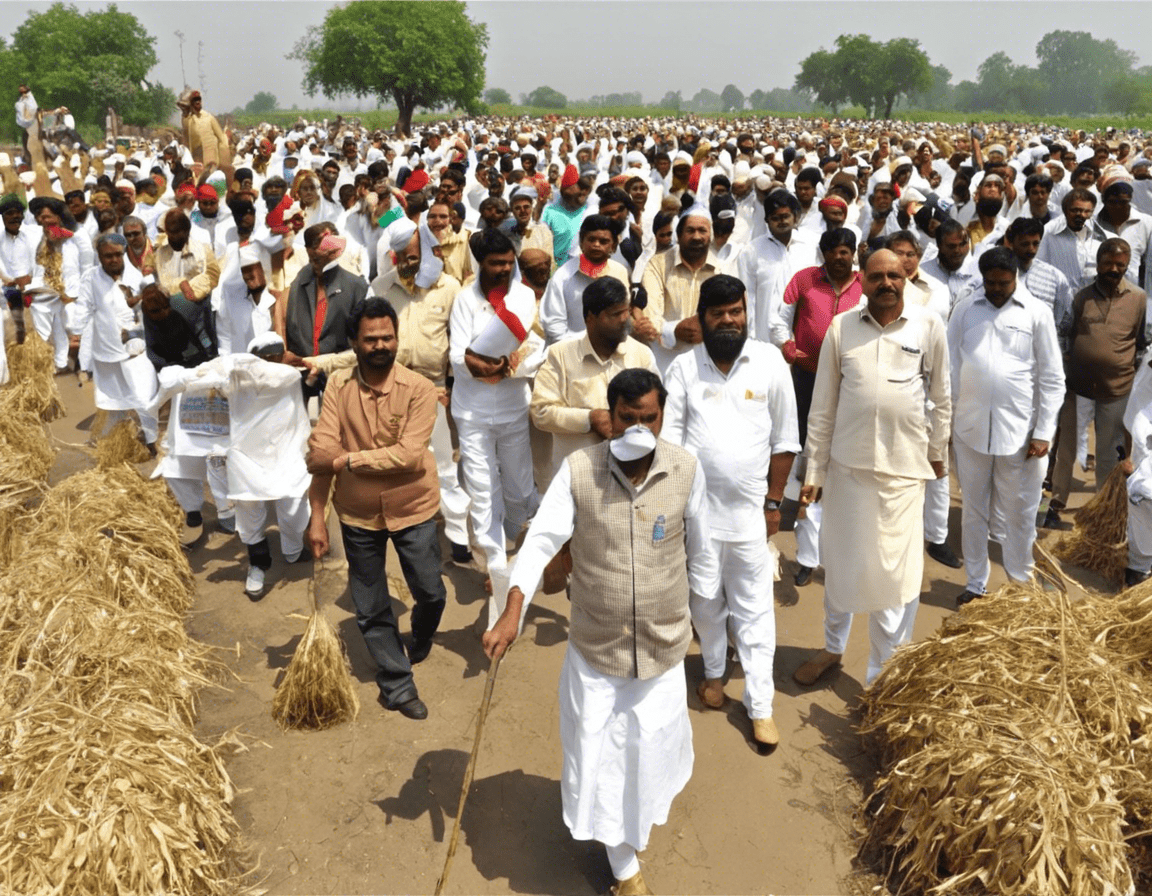blog
Latest Updates on Kisan Andolan News

The Kisan Andolan, also known as the Farmers’ Protest, has garnered significant attention not only in India but also on a global scale. Farmers have been protesting against three new farm laws introduced by the Indian government in September 2020. The protest, which initially started in Punjab and Haryana, has gained momentum with farmers from various states joining in solidarity.
Understanding the Context of the Kisan Andolan
To comprehend the essence of the Kisan Andolan, it’s imperative to delve into the key factors that have fueled this movement:
Agriculture Laws and Farmers’ Concerns
The primary bone of contention revolves around the Farm Acts, specifically the Farmers’ Produce Trade and Commerce (Promotion and Facilitation) Act, the Farmers (Empowerment and Protection) Agreement on Price Assurance and Farm Services Act, and the Essential Commodities (Amendment) Act. Farmers argue that these laws undermine the existing support mechanisms and leave them vulnerable to exploitation by agribusinesses.
Impact on Agricultural Markets
The fear of dismantling the Minimum Support Price (MSP) system, which guarantees a minimum price for certain crops, and the potential commodification of agriculture have stirred apprehensions among farmers. They believe that these reforms would pave the way for corporate dominance, ultimately jeopardizing their livelihoods.
Role of Middlemen and APMC Mandis
The Agricultural Produce Market Committees (APMCs) have been a crucial element in the agricultural marketing system. Farmers are concerned that the new laws could erode the protection offered by APMCs, leading to increased reliance on private traders and corporations, thereby compromising their bargaining power.
Recent Developments and Ongoing Protests
As the agitation enters its second year, several significant events have unfolded, shaping the course of the protest:
Farmer Unions’ Demands
The Samyukta Kisan Morcha, an umbrella body representing various farmer unions, has been at the forefront of negotiations with the government. Their core demands include repealing the contentious farm laws, enacting a legal guarantee on MSP, and withdrawing the Electricity Amendment Bill 2020.
Government’s Response
Despite multiple rounds of talks between the farmers and the government, a resolution is yet to be reached. The Supreme Court of India has temporarily stayed the implementation of the laws but maintained that the protest should be resolved through dialogue, not confrontation.
International Support and Solidarity
The Farmers’ Protest has not only mobilized communities within India but has also garnered attention globally. Celebrities, politicians, and activists worldwide have expressed solidarity with the farmers, emphasizing the significance of standing up for agricultural rights and social justice.
Impact on Farmers and the Way Forward
It is crucial to understand the ramifications of the Kisan Andolan on the farming community and the broader agricultural landscape:
Economic Challenges and Resilience
The prolonged protest has placed immense strain on the participating farmers, who have demonstrated unwavering resilience in the face of adversity. With livelihoods at stake and mounting debts, the protest embodies a spirit of collective struggle for justice and equity in the agricultural sector.
Policy Reforms and Structural Change
The Farmers’ Protest has underscored the need for comprehensive policy reforms that prioritize the welfare of farmers. It has ignited conversations about sustainable agricultural practices, equitable market mechanisms, and the preservation of traditional farming methods.
Call for Unity and Empowerment
Beyond the immediate demands for repealing the farm laws, the Kisan Andolan symbolizes a larger movement for unity and empowerment among farmers. It amplifies the voices of those who have long been marginalized in the agricultural narrative, emphasizing the importance of inclusive decision-making processes.
FAQs on the Kisan Andolan
- Why are farmers protesting in India?
Farmers are protesting against the new farm laws introduced by the government, which they fear will undermine their livelihoods and leave them vulnerable to exploitation by corporations.
- What are the core demands of the farmer unions?
The farmer unions are demanding a repeal of the farm laws, a legal guarantee on MSP, and the withdrawal of the Electricity Amendment Bill 2020.
- How long has the Farmers’ Protest been ongoing?
The protest began in September 2020 and has continued for over a year, with farmers from various states participating in demonstrations.
- Has the government made any concessions to the farmers’ demands?
While there have been talks between the farmers and the government, a resolution is yet to be reached. The Supreme Court has stayed the implementation of the laws temporarily.
- What is the role of the Samyukta Kisan Morcha in the protest?
The Samyukta Kisan Morcha is an umbrella body representing various farmer unions and has been leading the negotiations with the government on behalf of the protesting farmers.
In conclusion, the Kisan Andolan epitomizes a grassroots movement driven by the resilience, unity, and unwavering spirit of India’s farming community. As the protest continues to unfold, it serves as a poignant reminder of the power of collective action in advocating for social justice and agricultural reforms.









